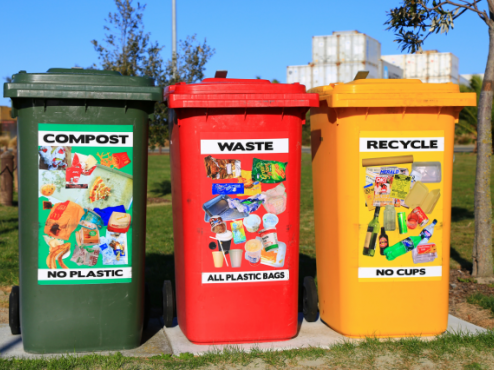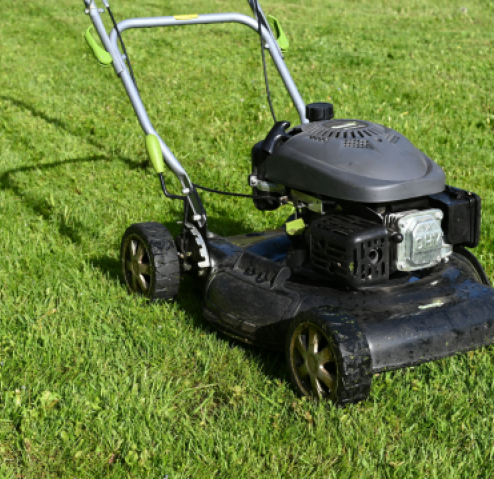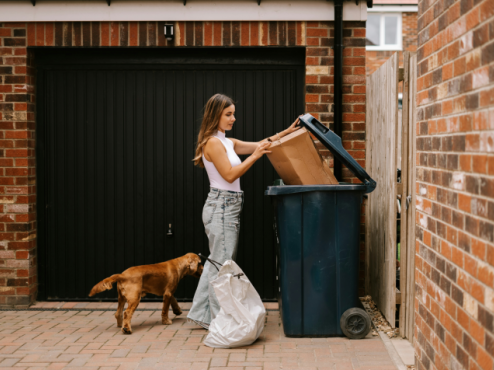What is Metal Scrap Recycling?
What is Metal Scrap Recycling?
It’s no secret the recycling is on the minds of many people. Some wonder if the things they want to get rid of can be recycled. Others wonder if the small amounts they produce are worth turning in for recycling. Everyone can participate in this effort. In terms of benefits, everyone gets some good out of the process, although some of the rewards are indirect.
Metal recycling is of particular interest to some. If you fall into that category, you probably have questions that need answers. You’ll find that professionals at waste recycling services as well as others can answer those questions. Here is some information to help you get started.

A Working Definition of Metal Scrap Recycling
Exactly what is metal scrap recycling? A basic working definition can serve as the foundation for your recycling efforts and help you understand more about how it’s done and why it matters.
Here’s a simple one that will serve the purpose: metal scrap recycling is the recovery of scrap metal from products that are at the end of their useful life. That scrap metal may come from all sorts of products, ranging from household appliances to metal that’s salvaged from demolition work that involves aging structures.
It’s not just recovering the metal that is no longer serving a purpose. Recycling involves moving beyond reclaiming the metal and moving on to preparing it for use in new products, building construction, and any other application that requires the use of metal. Once the reclaimed metal is properly processed, it’s capable of being used for a wide range of new products. Recycled
metal provides the same type of strength and endurance that’s offered by any other type of metal.

Does It Make Much of a Difference?
Recycling metal matters on some levels. The most immediate one has to do with reducing the need to create additional landfills. By collecting used metal and recycling it, all sorts of discarded items never make it to the dump or landfill. Think of what that means in terms of not needing more dumping grounds to get rid of things like old cars, washing machines, ovens,
refrigerators, and other things that people replace periodically.
This leads to another important reason to recycle scrap metal: it’s good for the environment. Land not used for junkyards and landfills can be put to some other purposes, including farming, forestry projects, and other activities that help to maintain the planet’s balance. Think of recycling unwanted metal as another way of keeping the world healthier.
There’s also the matter of economics. The cost of recycling scrap metal is competitive with the expense of producing new metal. With recycling, it’s possible to produce new goods that provide the same quality and keep the cost of those new goods a little lower. Because metal is used in so many different ways today, it’s not hard to see why turning in scrap metal to local
waste recycling services in Seattle WA is an investment in being able to purchase more affordable products in the future.
What Metals Can Be Recycled?
The range of metals that can be recycled is broader than many people realize. That’s because some recycling centers accept only certain types of metals. That doesn’t mean other facilities will turn away metal objects that are rejected by some. It just means you may need to work with more than one recycling service based on the kinds of metals each one accepts.
You’ll find that both ferrous and non-ferrous metals can be recycled. Ferrous metals are made using combinations of iron paired with carbon. That’s more common than many people may make. The cast-iron cookware that is found in many kitchens is ferrous material. Wrought iron that’s used for many types of decorating fencing is also ferrous metal. If the metal happens to
be referred to as an alloy, it falls into this category.
What about non-ferrous metals? Aluminum used in cans is a prime example. Tin, lead, and copper are also ferrous metals. You’ll find that some of the more precious metals also fall into this category: gold, silver, and platinum are all ferrous metals.

How is Metal Recycled?
There is some variance in how metal is recycled. It may have to do with the type of metal used or the processes used by various waste recycling services in Denver CO. While there may be some differences here and there, it’s possible to outline the basic process in a way that everyone can understand. Here are the basic steps involved.
*Collection - Metal objects are collected and transported to a recycling center. From automobiles to household appliances, they are sold for scrap, sometimes crushed, and then delivered to a recycling facility.
*Sorting – This step focuses on segregating different metals used in the discarded items. At times, this is done manually. Other facilities may make use of automated equipment that can sort the materials based on the details. Tools like sensors or magnets may be utilized to quickly sort materials while saving time and labor.
The sorting may include one step more than dividing different kinds of metals. In some cases, separating metals that are relatively clean from those that need a lot of cleaning may be part of the process. It’s true that eventually, all the scrap will have to be cleaned; it’s just that some scrap may need deeper cleaning than the rest.
*Processing – Processing typically means breaking down the metal. Shredding is the most common way to do this. By shredding the metal into smaller and more manageable pieces, it prepares the metal for what is to come next. This also helps to decrease the amount of energy needed to continue preparing the metal for some future use.
*Melting – After shredding, melting in a furnace makes it possible to create metal that can be easily manipulated and shaped for future purposes. This particular step is one that requires more energy than the others. However, the energy expended in this step is still considerably less than the energy it would take to smelt and prepare raw materials for use. Different types of
furnaces are often used for reclaiming various metals. Besides, the temperatures used in the furnaces will vary, based on the type of metal involved. The actual process may take no more than a few minutes, although it may require hours when melting down certain metals.
*Purification – Purifying the reclaimed metal ensures that the quality is higher and that there’s nothing present that would interfere with the strength and durability of the recycled product. During this stage, all contaminants are removed. This results in a metal that is of the same quality as that made using raw materials. It’s not unusual for electrolysis to be used as part of
the purification process.
*Solidifying – Once the purification process is completed, the metal is shaped and cooled into the shape that is most common for that particular product. In some cases, that shape may be in bars. At other times, it may be sheets. The point is to prepare the metal for conveyance to the entity that will eventually put it to good use. Attention to the shape will aid in being able to ship the finished materials with relative ease.
*Shipping and Delivering the Recycled Metal – After the solidification process is completed and the metal is thoroughly cooled, it’s ready to be used in the creation of new goods. The recycled metal can be used to fill pending orders for everything from construction materials to the manufacturing of new metal objects. Based on the type of metal required as well as the amount, the material is prepared for shipment and ultimately delivered to a production facility where it can be made into whatever is required.

How Many Times Can Metal Be Recycled?
Here’s one of the beautiful things about recycled metal. It can serve a new purpose, then go back through the recycling process again. That makes it one of the most renewable resources on the planet. It’s also one of the most versatile since there’s no reason why the recycled product can be used for different purposes with each incarnation.
Every time metal is recycled, it once again provides all the benefits that it did with previous rounds of recycling. It doesn’t end up in a landfill, it preserves raw materials, and it costs less to manufacture the product.
What Can Be Done With Recycled Metals?
A better question may be what can’t be done with recycled metals. It’s possible to use them in new building construction. That applies to residential as well as commercial construction. The metal can be used to fashion new components for machinery. It may be used for automobile bodies, siding for different types of buildings, or in the creation of different types of electrical
devices.

The bottom line is that metal scrap recycling has the potential to do more for the world and those who live on it than most people realize. Don’t assume the small amounts that you can contribute are of no value in the great scheme of things. By combining your contributions with those of others in the community, it’s possible to ensure the metal continues to provide function in the future while also leaving less of an impact on the environment.
Are you wondering how to get involved? Talk with a local recycling service today and see what they accept. You may be able to spearhead a local effort to collect and turn in more materials and better the community in more ways than one.
 How to Recycle and Why You Should Do It in Denver, Colorado
How to Recycle and Why You Should Do It in Denver, Colorado
In Denver, Colorado, recycling is more than just a good practice; it’s a powerful way to contribute to a cleaner, greener, and more sustainable community.
Read More Everything You Need to Know About Recycling Old Lawn Mowers
Everything You Need to Know About Recycling Old Lawn Mowers
When your lawn mower has reached the end of its useful life, the question arises: what should you do with it? Disposing of an old lawn mower may seem simple, but doing so in an environmentally responsible way is crucial.
Read More Bagster vs. Dumpster: Which is the More Environmentally Friendly Choice?
Bagster vs. Dumpster: Which is the More Environmentally Friendly Choice?
When planning a cleanup or renovation project, it’s essential to consider the environmental impact of your waste disposal method. Should you choose a Bagster or rent a dumpster? Let’s explore which option is more environmentally friendly.
Read More Financial Incentives and Programs for Refrigerator Recycling
Financial Incentives and Programs for Refrigerator Recycling
Recycling old appliances like refrigerators not only benefits the environment but can also provide financial incentives for consumers. From utility rebates to cash for clunkers programs, various initiatives encourage responsible disposal and recycling practices. This article explores the financial incentives and programs available for refrigerator recycling, empowering consumers to make informed decisions about appliance disposal.
Read More